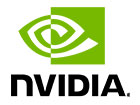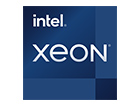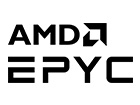-
Archives
- June 2020
- May 2020
- March 2020
- August 2019
- June 2019
- April 2019
- March 2019
- May 2018
- April 2018
- October 2017
- September 2017
- July 2017
- April 2017
- February 2017
- January 2017
- December 2016
- August 2016
- July 2016
- June 2016
- April 2016
- March 2016
- February 2016
- January 2016
- October 2015
- September 2015
- July 2015
- June 2015
- May 2015
- April 2015
- November 2014
- October 2014
- September 2014
- June 2014
- May 2014
- April 2014
- March 2014
- February 2014
- January 2014
- December 2013
- November 2013
- October 2013
- September 2013
- August 2013
- July 2013
- June 2013
- April 2013
- March 2013
- February 2013
- January 2013
- September 2012
- May 2012
- April 2012
- January 2012
- December 2011
- September 2011
- August 2011
- July 2011
-
Meta
Knowledge Center Archives
Detailed Specifications of the Intel Xeon E5-2600v4 “Broadwell-EP” Processors
This article provides in-depth discussion and analysis of the 14nm Xeon E5-2600v4 series processors (formerly codenamed “Broadwell-EP”). “Broadwell” processors replace the previous 22nm “Haswell” microarchitecture and are available for sale as of March 31, 2016. For an introduction, read our … Continue reading
In-Depth Comparison of NVIDIA Tesla “Maxwell” GPU Accelerators
This article provides in-depth details of the NVIDIA Tesla M-series GPU accelerators (codenamed “Maxwell”). “Maxwell” GPUs improve upon the previous-generation “Kepler” architecture, although they do not necessarily replace all “Kepler” models. Important changes available in the “Maxwell” GPU architecture include: … Continue reading
Detailed Specifications of the Intel Xeon E5-4600 v3 “Haswell-EP” Processors
This article provides in-depth discussion and analysis of the 22nm Xeon E5-4600 v3 series processors (formerly codenamed “Haswell-EP”). “Haswell” processors replace the previous 22nm “Ivy Bridge” microarchitecture and are available for sale as of June 1, 2015. For an introduction, … Continue reading
Detailed Specifications of the Intel Xeon E5-2600v3 “Haswell-EP” Processors
This article provides in-depth discussion and analysis of the 22nm Xeon E5-2600v3 series processors (formerly codenamed “Haswell-EP”). “Haswell” processors replace the previous 22nm “Ivy Bridge” microarchitecture and are available for sale as of September 8, 2014. Note: these have since … Continue reading
In-Depth Comparison of Intel Xeon E5-4600v2 “Ivy Bridge” Processors
This article provides in-depth discussion and analysis of the 22nm Xeon E5-4600v2 series processors (formerly codenamed “Ivy Bridge”). These “Ivy Bridge” processors improve upon the previous 32nm “Sandy Bridge” microarchitecture and are available for sale as of March 3, 2014. … Continue reading
Comparison of NVIDIA Tesla/Quadro and NVIDIA GeForce GPUs
This resource was prepared by Microway from data provided by NVIDIA and trusted media sources. All NVIDIA GPUs support general purpose computation (GPGPU), but not all GPUs offer the same performance or support the same features. The consumer line of … Continue reading
In-Depth Comparison of NVIDIA Tesla Kepler GPU Accelerators
This article provides in-depth details of the NVIDIA Tesla K-series GPU accelerators (codenamed “Kepler”). “Kepler” GPUs improve upon the previous-generation “Fermi” architecture. For more information on other Tesla GPU architectures, please refer to: In-Depth Comparison of NVIDIA Tesla “Maxwell” GPU … Continue reading
In-Depth Comparison of Intel Xeon E5-2600v2 “Ivy Bridge” Processors
This article provides in-depth discussion and analysis of the 22nm Xeon E5-2600v2 series processors (formerly codenamed “Ivy Bridge”). “Ivy Bridge” processors improve upon the previous 32nm “Sandy Bridge” microarchitecture and are available for sale as of September 10, 2013. For … Continue reading
Performance Characteristics of Common Network Fabrics
Ethernet Performance of ethernet networks varies widely. Factors include the switch and NIC manufacturer, firmware settings and system/software settings. Physical layer even plays a role: 10 GigE over RJ45 (10GBase-T) has a higher latency than SFP+ Direct-Attach copper. Contact our … Continue reading
Estimating the Performance of a New Computer System
Transistor density doubles every ~2 years. Ideally, this means we can provide you computers that contain twice as much memory and perform twice as fast. In practice, it’s much more nuanced. Benchmark Your Application The best performance comparison will always … Continue reading














